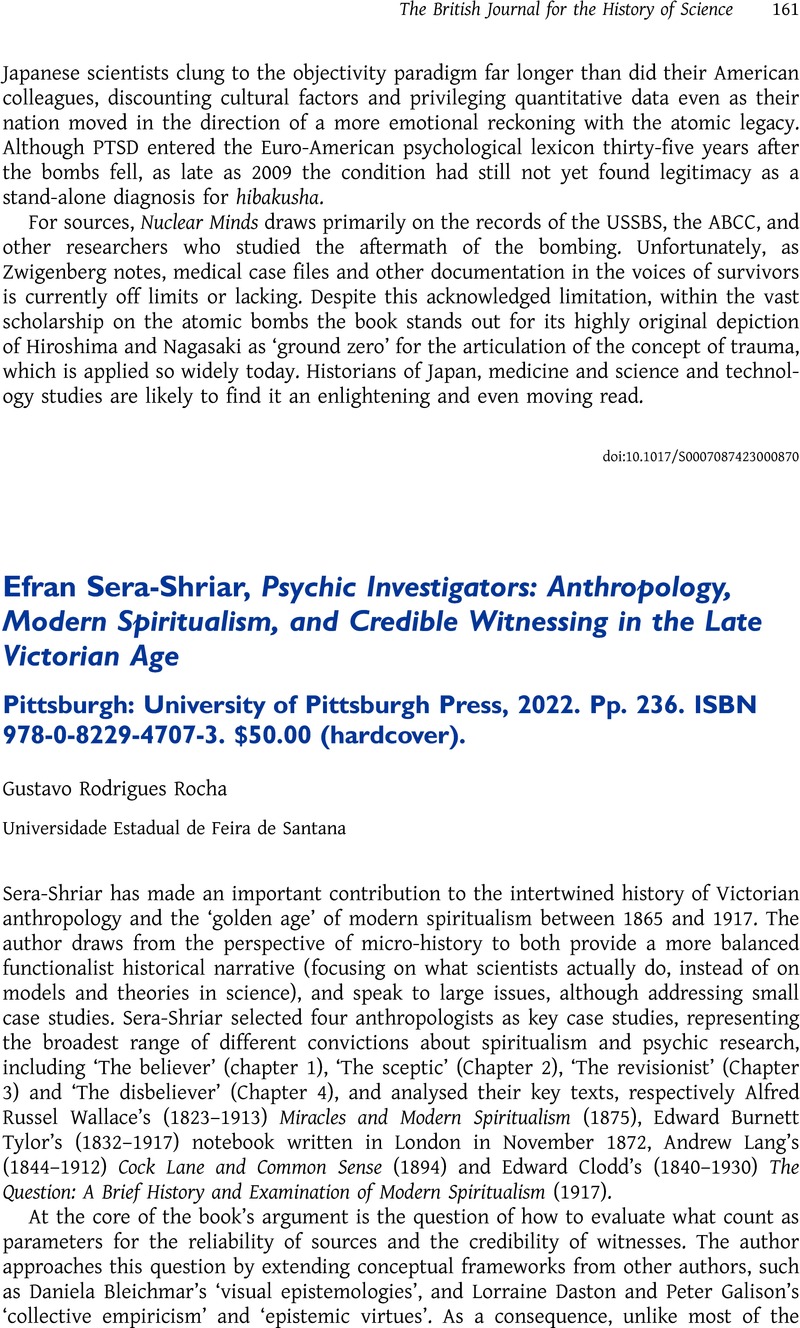No CrossRef data available.
Article contents
Efran Sera-Shriar, Psychic Investigators: Anthropology, Modern Spiritualism, and Credible Witnessing in the Late Victorian Age Pittsburgh: University of Pittsburgh Press, 2022. Pp. 236. ISBN 978-0-8229-4707-3. $50.00 (hardcover).
Review products
Efran Sera-Shriar, Psychic Investigators: Anthropology, Modern Spiritualism, and Credible Witnessing in the Late Victorian Age Pittsburgh: University of Pittsburgh Press, 2022. Pp. 236. ISBN 978-0-8229-4707-3. $50.00 (hardcover).
Published online by Cambridge University Press: 03 November 2023
Abstract
An abstract is not available for this content so a preview has been provided. Please use the Get access link above for information on how to access this content.

- Type
- Book Review
- Information
- Copyright
- Copyright © The Author(s), 2023. Published by Cambridge University Press on behalf of British Society for the History of Science



